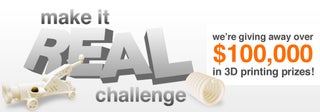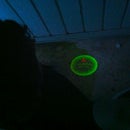Introduction: Six Camera Face Scan Rig (using 123DCatch / Photofly for Processing)
I was recently asked to build "something fun" for a science museum event.
Since I was already waist deep in the world of photogrammetry at work (the reconstruction of 3D data from photographs), I decided to build a camera rig for capturing the faces of the visitors (mostly kids). Now if you have kids, or have ever seen a kid on TV, you know that they very rarely sit still for more than 0.25 seconds unless they are sleeping or in an Elmo-induced hypnotic trance... though even that lasts for only about 0.58 seconds. How then, can kids be photographed from multiple angles simultaneously?
Hmm... we could get a super high speed camera (let's say 10,000 frames per second), put the child on a stool in front of the camera and spin him really fast! Surely we'll get at least a few useable angles with high similarity and no vomit. The parents have an issue with that? Whatever! Little Johnny will almost certainly experience much worse, likely self-inflicted scenarios.
Fine, next idea: Purchase 6 cheap-wad digital cameras and wire them up to one trigger button. That's it! Simple and obvious!
This photo gallery (with annotations) illustrates the 3-week long process of sourcing, cutting, soldering, rigging, wiring and data collecting. In the end, you'll see that the ability to freeze little people in time from multiple angles pays off!
Read on, friends!
Since I was already waist deep in the world of photogrammetry at work (the reconstruction of 3D data from photographs), I decided to build a camera rig for capturing the faces of the visitors (mostly kids). Now if you have kids, or have ever seen a kid on TV, you know that they very rarely sit still for more than 0.25 seconds unless they are sleeping or in an Elmo-induced hypnotic trance... though even that lasts for only about 0.58 seconds. How then, can kids be photographed from multiple angles simultaneously?
Hmm... we could get a super high speed camera (let's say 10,000 frames per second), put the child on a stool in front of the camera and spin him really fast! Surely we'll get at least a few useable angles with high similarity and no vomit. The parents have an issue with that? Whatever! Little Johnny will almost certainly experience much worse, likely self-inflicted scenarios.
Fine, next idea: Purchase 6 cheap-wad digital cameras and wire them up to one trigger button. That's it! Simple and obvious!
This photo gallery (with annotations) illustrates the 3-week long process of sourcing, cutting, soldering, rigging, wiring and data collecting. In the end, you'll see that the ability to freeze little people in time from multiple angles pays off!
Read on, friends!

Participated in the
Make It Real Challenge











